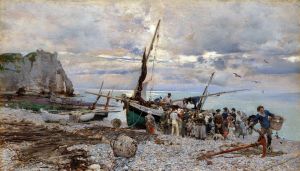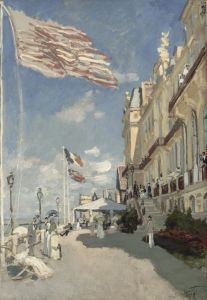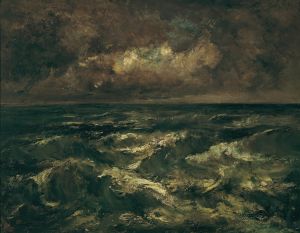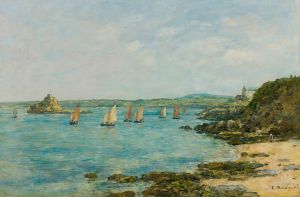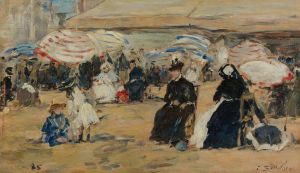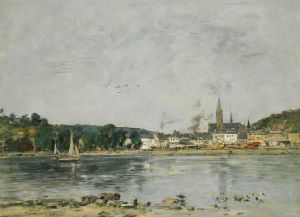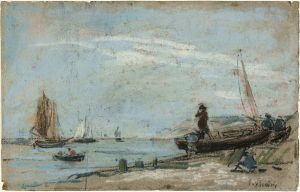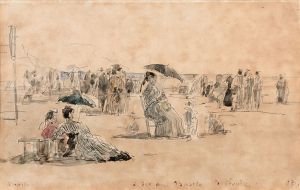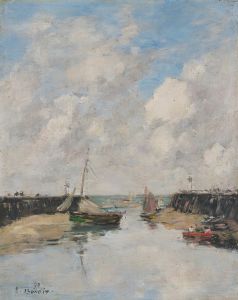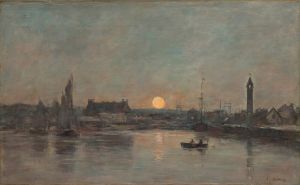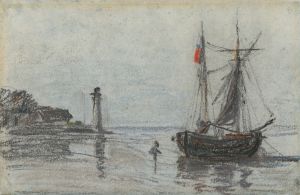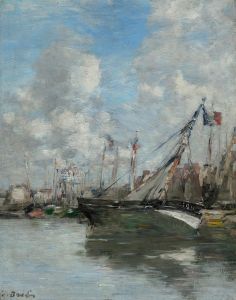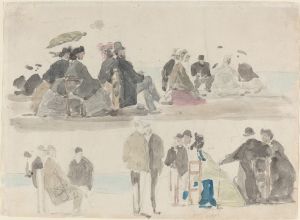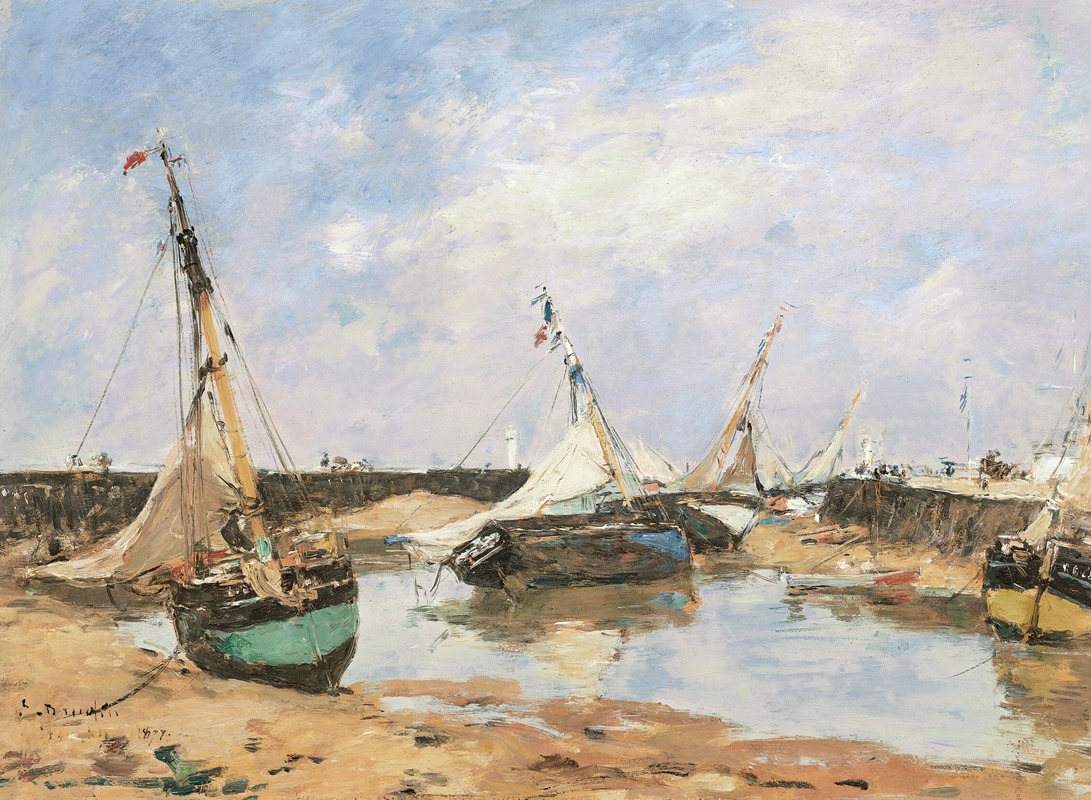
Trouville. Barques échouées entre les jetées
A hand-painted replica of Eugène Boudin’s masterpiece Trouville. Barques échouées entre les jetées, meticulously crafted by professional artists to capture the true essence of the original. Each piece is created with museum-quality canvas and rare mineral pigments, carefully painted by experienced artists with delicate brushstrokes and rich, layered colors to perfectly recreate the texture of the original artwork. Unlike machine-printed reproductions, this hand-painted version brings the painting to life, infused with the artist’s emotions and skill in every stroke. Whether for personal collection or home decoration, it instantly elevates the artistic atmosphere of any space.
Eugène Boudin, a prominent French painter, is celebrated for his significant contributions to the development of landscape painting, particularly in the context of the Impressionist movement. One of his notable works is "Trouville. Barques échouées entre les jetées," which translates to "Trouville. Boats Stranded Between the Jetties." This painting exemplifies Boudin's mastery in capturing the transient effects of light and atmosphere, a hallmark of his artistic style.
Boudin was born in Honfleur, France, in 1824, and he spent much of his life painting the coastal regions of Normandy. His early exposure to the sea and maritime life profoundly influenced his artistic vision. Boudin's work is characterized by his ability to depict the nuances of the sky and water, often focusing on the interplay between light and the natural environment.
"Trouville. Barques échouées entre les jetées" is a testament to Boudin's fascination with the seaside and his skill in portraying the everyday life of coastal towns. Trouville-sur-Mer, a popular seaside resort in Normandy, served as a frequent subject in Boudin's paintings. The town's bustling port and picturesque beaches provided ample inspiration for his work.
In this painting, Boudin captures a scene of boats stranded between the jetties at Trouville. The composition reflects his keen observation of maritime activities and his ability to convey the atmosphere of the location. The boats, depicted with meticulous attention to detail, are set against a backdrop of the expansive sky and calm sea. Boudin's use of light and shadow creates a sense of depth and movement, drawing the viewer into the scene.
Boudin's technique involved painting en plein air, or outdoors, which allowed him to capture the changing effects of light and weather with immediacy and authenticity. This approach was influential in the development of Impressionism, as it encouraged artists to paint scenes directly from nature and to focus on the ephemeral qualities of light and color.
Throughout his career, Boudin maintained a close relationship with other artists who would later become central figures in the Impressionist movement. He was a mentor to Claude Monet, who credited Boudin with teaching him the importance of capturing natural light. Boudin's work laid the groundwork for the Impressionists' exploration of atmospheric effects and their departure from traditional studio painting.
"Trouville. Barques échouées entre les jetées" exemplifies Boudin's contribution to the evolution of landscape painting. His ability to convey the essence of a moment through his depiction of light and atmosphere continues to be celebrated in the art world. Boudin's paintings are held in high regard for their technical skill and their role in shaping the direction of modern art.
Today, Boudin's works, including this painting, are housed in various museums and collections around the world, where they continue to be appreciated for their beauty and historical significance. His legacy as a pioneer of plein air painting and a precursor to Impressionism remains influential, and his depictions of the French coast endure as timeless representations of the natural world.





